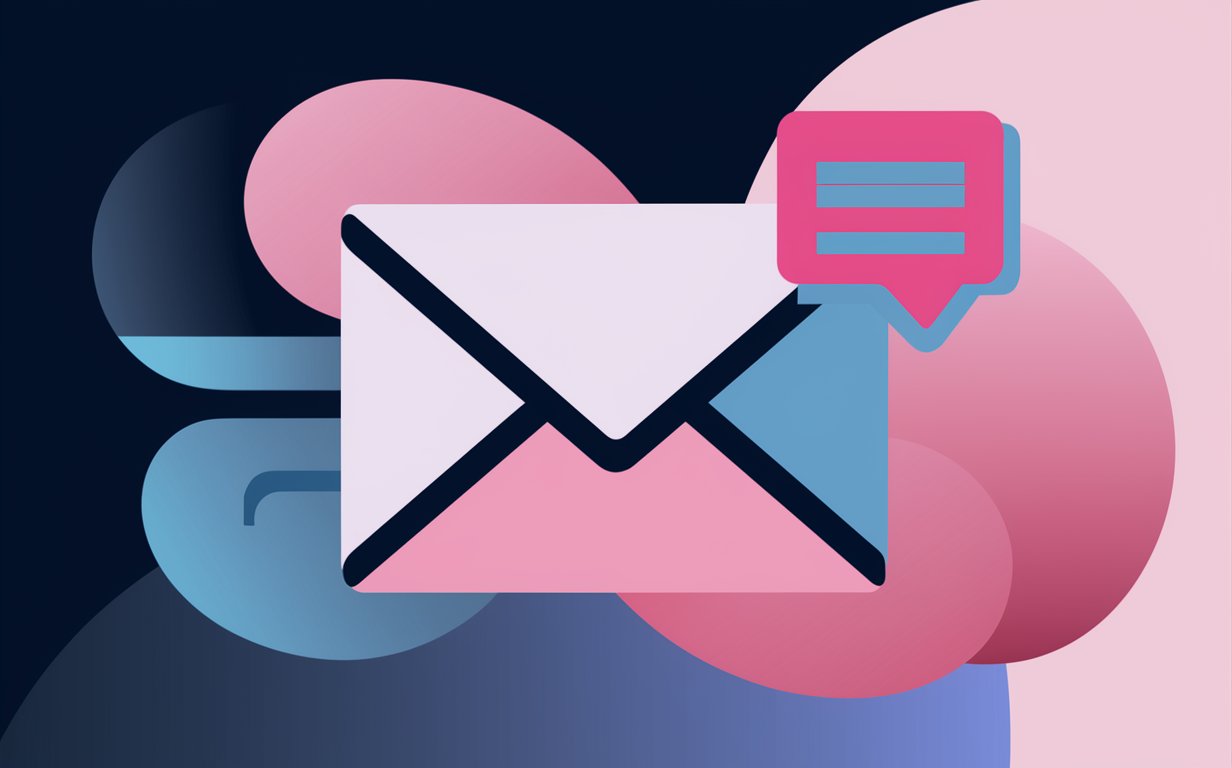Communication through email is a common and essential practice in today’s educational environment. Knowing how to write an effective email to your teacher is crucial for effective academic correspondence. But How to Write an Email to a Teacher? This guide will walk you through the process, from basic email etiquette to handling specific situations with professors.
Email Etiquette
When composing an email to your teacher, certain email etiquette rules must be followed to ensure clear and respectful communication.
Importance of a Clear Subject Line
The subject line of your email is the first thing your teacher will see. It should be concise and clearly indicate the purpose of your email, whether it’s a question, request, or update regarding a class.
Using the Correct Salutation
Begin your email with a proper greeting that addresses your teacher respectfully, such as “Dear Professor [Last Name]” or “Hello, Ms./Mr. [Last Name].” Using the correct salutation sets a professional tone for your email.
Proofreading Your Email
Before hitting send, make sure to proofread your email for any grammatical errors, spelling mistakes, or unclear phrasing. A well-written email reflects your attention to detail and professionalism.
Tips for Crafting the Email
When writing an email, it’s important to structure your message effectively and include all necessary information.
Proper Email Format
Follow a proper email format with a clear introduction, body text with the main message, and a polite conclusion. Keeping your email concise and to the point is key.
Including Relevant Information from Syllabus
Referencing specific details from your syllabus or class assignments can help your teacher understand the context of your email and address your concerns more efficiently.
Using Full Name and Punctuation
Always sign off your email with your full name to provide a professional touch. Additionally, using appropriate punctuation throughout your email demonstrates your writing skills.
Specific Situations: Email to a Professor
When addressing particular scenarios in emails to professors, it’s important to maintain a respectful and formal tone.
Requesting Office Hours
If you need to schedule a meeting with your professor, clearly state your availability and politely request a convenient time for office hours.
Asking for a Letter of Recommendation
When seeking a letter of recommendation, provide your professor with relevant information about the program or position you are applying for and the deadline for submission.
How to Start Your Email Professionally
Begin your email with a professional greeting and a brief introduction of yourself and the purpose of your email. This sets a respectful tone and clarifies the reason for your message.
Polishing Your Email
After drafting your email, take the time to refine and polish its content to ensure it conveys your message effectively.
Guidelines for a Detailed Subject Line
A detailed subject line helps your teacher understand the topic of your email at a glance. Be specific and concise in summarizing the content of your message.
Conciseness in Content
Avoid lengthy paragraphs and unnecessary details in your email. Be clear and concise in your communication to respect your teacher’s time and attention.
Proofreading for Errors
Before sending your email, carefully review it for any typos, grammatical errors, or unclear statements. A polished email demonstrates your professionalism and attention to detail.
Thought Provoking Questions
- When you email a teacher, how can you ensure that your message is clear and respectful, especially when discussing sensitive topics like grades or feedback?
- If you need to email a professor or teacher, how do you balance being clear and direct with being polite and respectful?
- How can students write a clear and concise email, particularly when they need to provide detailed information about a research paper or assignment due date?
- What are the best practices for writing emails to educators, such as emailing your teacher or professor, to ensure that your questions and concerns are addressed effectively?
- How can you start an email with an appropriate greeting, like “Dear” or “Hello,” and end an email professionally with phrases like “Sincerely” or “Best regards”?
- Why is it important to use your school email account and include your name when communicating with teachers, rather than using a personal email account?
- When sending an email to a teacher or professor, how can you write the email in a way that is brief and to the point, yet comprehensive enough to provide all necessary context?
These questions encourage readers to think critically about the nuances of academic communication, particularly in the context of emails to teachers and professors. How to Write an Email to a Teacher? They highlight the importance of clarity, politeness, and appropriate formatting in written correspondence.
Ethical Considerations on How to Write an Email to a Teacher
1. Respecting Boundaries in Communication
Issue: When you’re emailing a professor or teacher, it’s crucial to respect their time and boundaries. This includes choosing appropriate times to send a follow-up email and respecting their responses or lack thereof.
Arguments For: Teachers often receive numerous emails every day and may not have the bandwidth to answer your question immediately. Respecting their time demonstrates consideration and understanding of their busy schedules.
Arguments Against: On the other hand, students may argue that sending an email is a necessary part of their educational process and that educators should be accessible for academic inquiries. There’s a balance between the need to write for clarification and respecting the teacher’s time.
2. Professionalism and Tone in Emails
Issue: The tone and formality of emails, especially the first email to an educator, can present ethical considerations. Deciding how formal or informal to be can affect the perception and relationship with the teacher or professor.
Arguments For: Using formal greetings like “Dear” and “Sincerely” sets a professional tone, which is respectful and acknowledges the educator’s position. It’s important to be clear and formal, particularly in academic settings, to maintain professionalism.
Arguments Against: Conversely, some argue that too much formality can create unnecessary distance. In some educational cultures, a more casual approach with greetings like “Hi” or “Hello” might be more engaging and relatable, fostering a more approachable atmosphere. However, email samples of professional communication often emphasize maintaining a formal tone.
3. Transparency and Honesty in Communication
Issue: When students write a letter or email to their professor, they may sometimes embellish or omit information to gain sympathy or an extension, presenting an ethical dilemma about honesty.
Arguments For: It’s sometimes argued that students should present their situations in the best possible light, especially when asking a question or requesting leniency. This can include selectively sharing information that supports their case.
Arguments Against: On the contrary, important to be clear and honest in all communications. Teachers need accurate information to make fair decisions, and misleading them can lead to mistrust or unfair advantages over other students. Transparency is essential in maintaining integrity and fairness in the academic environment.
These ethical considerations highlight the complexities involved in student-educator communications. From choosing the right tone to respecting boundaries and maintaining honesty, each aspect plays a critical role in fostering a respectful and professional academic environment. It’s essential to navigate these issues thoughtfully, ensuring that both students and educators communicate effectively and ethically.
Expert Comment by Dr. Amanda Hartley, Renowned Communication Specialist on How to Write an Email to a Teacher
“As a communication expert, I often emphasize the importance of clarity and professionalism in academic correspondence. When writing an email to your professor, it’s crucial to use ‘Dear’ at the beginning and end with a polite closing like ‘Sincerely‘ or ‘Best regards‘. Starting with a polite greeting, such as ‘Hello,’ and ending with a ‘thank you’ sets a respectful tone. Email is free, but it doesn’t mean it should be casual; a formal email is usually the appropriate format.
When talking to your teacher via email, especially if emailing your professor for the first time, make sure to use clear language and avoid slang or abbreviations. A well-structured body of the email, ideally five sentences or less, ensures your message is concise and to the point. It’s also helpful to use bullet points for clarity. Remember, polite emails that provide as much information as needed without overwhelming the reader are more likely to get a timely and helpful response.
Also, teacher isn’t just a recipient of your message; they’re a professional with many responsibilities. Teachers may not expect an immediate response, but clear communication will help them understand your needs better. If you’re discussing a course you’re enrolled in, email to your teacher isn’t just about getting information; it’s also a reflection of your professionalism and respect for their time.
Finally, hope this email finds you well is a courteous way to start, but remember to thank them for their time at the end. Good communication is key in any educational setting, and providing as much context as possible will make your requests more understandable and easier to fulfill.”
Myth Busting: Debunking Common Misconceptions About Academic Email Etiquette
Myth 1: “Using casual greetings like ‘Hi’ or ‘Hello’ is acceptable in all academic emails.”
Reality: While greetings like “Hi” or “Hello” can be appropriate in casual or familiar contexts, they are probably not the best way to start a formal email to a professor or teacher. It’s generally better to use ‘Dear’ followed by the recipient’s title and last name (e.g., Dear Professor Smith). This sets a respectful tone and acknowledges the professor’s professional status.
Myth 2: “You can use ‘Dear’ and ‘Sincerely’ only in the first email.”
Reality: The use of formal openings and closings, like “Dear” and “Sincerely”, is a good practice not just for initial emails but for all professional communications. They help maintain a respectful and formal tone. While a more casual approach might seem easier, especially when you’re more familiar with the teacher, sticking with formalities like ‘Best regards’ is usually safer and more appropriate in an academic setting.
Myth 3: “Your English teacher or professor doesn’t care much about the details in your emails.”
Reality: On the contrary, educators often pay close attention to the form and content of student communications. They notice if a student follows proper etiquette, which reflects the student’s respect and professionalism. Simple things like using the correct title, starting with “Dear” and ending with a “thank” or “Best”, and following with ‘Best regards’ can significantly impact the recipient’s perception. Tips to help craft respectful and clear emails include avoiding overly casual language and ensuring clarity, even if you feel the topic is straightforward.
By addressing these myths, we aim to provide tips to help students navigate academic email etiquette effectively. Remember, how you communicate can reflect your seriousness and respect for the academic environment. Try asking yourself if the language and structure you’re using are appropriate for the context before hitting ready to send. This thoughtful approach is a more respectful way to communicate and can foster better responses and interactions.
Future Implications on How to Write an Email to a Teacher
Looking ahead, the norms and expectations surrounding academic communication may continue to evolve. As digital communication becomes increasingly informal, we might see a shift in the acceptance of casual greetings like “Hi” and “Hello” in academic settings, especially as newer generations, accustomed to less formal modes of interaction, become educators. However, maintaining professionalism with phrases like “Dear” and “Sincerely” or “Best regards” is likely to remain important, as they signify respect and seriousness.
Additionally, as more diverse communication tools emerge, there could be a greater emphasis on clarity and precision. When it comes to writing emails, students may increasingly be guided to use ‘Dear’ and avoid addressing educators by their first name unless specifically invited to do so, ensuring they adhere to proper etiquette. Furthermore, as educators become more aware of these shifting norms, teacher knows that balancing informality with professionalism will be a crucial skill. The challenge will be to navigate these changes while maintaining the respect and decorum essential in academic interactions.




